Planting Methods and Propagation of Flowers--Orchid
Orchids have always been regarded as a symbol of nobility and elegance in China, and together with "plum, bamboo and chrysanthemum", they are called "four gentlemen". So how are orchids raised? Is there any good method in breeding? What matters do you need to pay attention to when raising orchids? Please read on with me with questions.
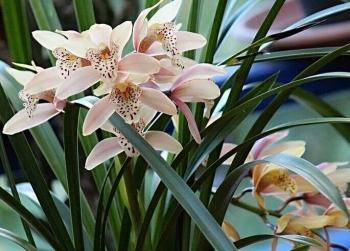
Culture methods of orchids (basic knowledge):
The best propagation time: the best propagation time of orchids is from March to April.
The best growth soil: orchid soil should be mainly humus, mainly humus soil or mountain humus soil. In the south, humus soil of origin, commonly known as orchid mud, can also be used to prepare loose, aerated and permeable culture soil with saprophyllite, vermiculite, perlite and so on. The prepared culture soil is slightly acidic.
Growth humidity requirements: orchids should be moist but not wet, dry but not dry. The humidity during the day is 70-90%.
The optimum temperature for orchid growth is 16-24 ℃.
The best growth light: orchids like shade and are afraid of strong light, so they should be shaded in spring, summer and autumn. For family orchids, in order to control the amount of light, it is best to put them on the balcony windowsill or under the eaves with bamboo shade, generally shading from 9 am to 6 pm, and opening the curtain after 6 pm in the morning and after 6 pm to make it accept scattered sunlight.
Cymbal
Points for attention in culturing orchids:
Fertilizer application: the principle of orchid fertilization is that it must be applied, and it is even more difficult to apply it more or more. Generally speaking, new leaf buds can be applied several times with a small amount of light fertilizer. The Spring Equinox, the Autumn Equinox and about 20 days after the flower fade are both more appropriate seasons. The best fertilization time is in the evening, and water is watered again in the next morning. Apply once every 2 to 3 weeks. At the same time, potassium dihydrogen phosphate was sprayed every 20 days to promote the blooming of pregnant buds. Depending on the leaf color fertilization, is a more appropriate way, the leaf is yellow and thin is lack of fertilizer, should be topdressing, black and leaf tip scorch is too much fertilizer, should stop fertilization. Fertilizer must be mature, can not be used without maturity, do not use human feces.
Watering essentials:
(1) the orchid should be watered less at flowering stage and leaf budding stage.
(2) watering in the early morning or evening in summer should not be too much, and the amount of water in autumn can be increased appropriately.
(3) spray every evening in the dry season. Spray upward, the fog point is fine and uniform, so that the leaf surface is moist, the ground is moist, and the air humidity is increased. Sometimes it is best to spray several times a day, watering should be watered from the edge of the basin, not on the head, not at noon.
(4) although watering in winter can be greatly reduced, but it is not without watering, be careful not to let the basin soil dry thoroughly, before the beginning of winter and spring and watering the leaf sheath along the wet, to be dried and moved into the room to avoid decay.
Pruning essentials: the withered and yellow old leaves and disease and insect leaves should be constantly cut off in orchid cultivation to facilitate ventilation. After the flower buds are unearthed, each plant should leave a strong flower bud and the rest should be cut off so as not to consume too much nutrients and affect flowering in the coming year. After the flower fades, the flower stalk should be cut off.
Replacement of basin soil:
The main results are as follows: (1) it is best for orchids to change pots and introduce orchids from cool autumn to Xiaoyang spring in October. Orchids need to change pots once every two years. Changing pots early and changing pots frequently is disadvantageous to the growth of orchids.
(2) some orchids cultivated in small "orchid pots" grow well. When orchid seedlings reach more than six seedlings, the pots should be changed once a year.
(3) for those orchids with poor growth and severe dry scorch of leaf tips, they may have rotten roots, or the soil may not be able to adapt. The basin should be changed in time at this time. Emergency basin change can be carried out at any time, but attention must be paid to keeping warm and humid after changing the basin.
Main points of propagation: orchids are propagated by ramets and tissue culture, and the varieties are cultivated by sowing.
Ramet propagation: ramets are carried out in spring and autumn, which vary from species to species. The species of flowering in winter and spring should be in late autumn, and the species of flowering in summer and autumn should be carried out before sprouting in early spring. It is common to have a ramet every 2-3 years. It is necessary to reduce watering before ramet, so that the basin soil should be properly dried; when ramet, hold the basin by hand, gently knock the mother plant out of the basin, remove the soil, cut off the rotten roots and leaves, then wash them with clean water and leave them in the shade for 3-5 hours. when the floating water disappears, the roots are white, soft and slightly wrinkled, then cut with a sharp knife from the middle of the false bulb, spread plant ash at the cut, and plant immediately after drying. Ramet operation should be careful to prevent damage to leaf buds and fleshy roots. Put it in the shade after putting it on the basin, and then transfer to normal management after resuming growth.
Pest control:
1. Phytophthora: avoid getting too wet, improve ventilation and adequate light. Avoid partial use of nitrogen fertilizer to reduce plant growth and weakness. Spray 1x800 carbendazim or 1x1000 Haoshengling liquid. The cut removed from the diseased plant is smeared with large cornflour and then placed in a dry place without watering for a week, which can curb the spread of the disease.
2. Anthrax: spray 1000 times thiophanate methyl or carbendazim solution once a week.
3. Soft rot: improve growth conditions, increase ventilation, reduce temperature and humidity. Remove the susceptible site, smear with antibiotic powder, do not water for a week, can stop the spread of the disease. Streptomycin 1000-fold aqueous solution, stone-sulfur mixture or Bordeaux solution were sprayed once a week.
4. Leaf blight: remove the diseased leaves and spray 500x Dasheng-45 or 1000 times good life. Susceptible plants should avoid Rain Water or suspend watering to prevent the disease from getting worse. Spray 500 times Dasheng-45 regularly once a day as a precaution.
5. White silk disease: remove the false bulbs with disease spots, together with the planted pots and materials, and burn them with fire. Spray 500 times Dasheng-45 liquid or 1000 times carbendazim solution once a week.
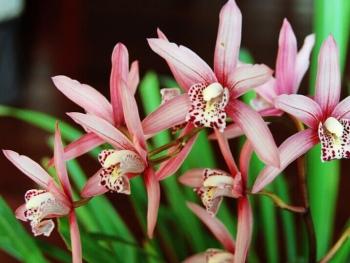
Cymbal
Experience of cultivating orchids:
1. The environment of orchid cultivation should be well ventilated, moist and pollution-free. The orchid basin should choose a high basin. The top is thick and the bottom is thin, with multiple drainage holes, or the basin wall is provided with drainage holes.
2. The withered and yellow old leaves and disease and insect leaves should be cut off continuously in orchid cultivation to facilitate ventilation. After the flower buds are unearthed, each plant should leave a strong flower bud and the rest should be cut off so as not to consume too much nutrients and affect flowering in the coming year. After the flower fades, the flower stalk should be cut off.
3. Watering in the hot season should be done after sunset in the evening to avoid the burning of the water on the leaf surface after exposure to the sun, and to prevent the young part of the new bud from being soaked by high temperature water.
4. Watering in the cold season should be carried out in the daytime, so as to avoid water frostbite in the basin at night, especially avoid stagnant water in the orchid heart, which is easy to make the young plants rot.
5. When there are disease spots on the leaves of orchid plants, the leaves should be kept dry to prevent the spread of germs.
6. Be careful not to water too often. Orchids have a great tolerance to water, and they are relatively drought-tolerant plants, and a little drying has little effect. On the contrary, it can not be wet, 24 hours of water will cause suffocation, daily cultivation, the vast majority of people love orchid too much, watering too often, resulting in root rot, resulting in plant death.
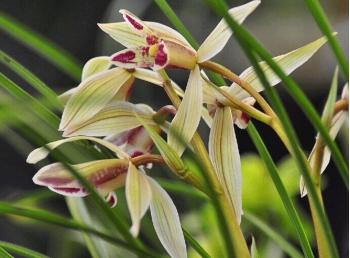
- Prev
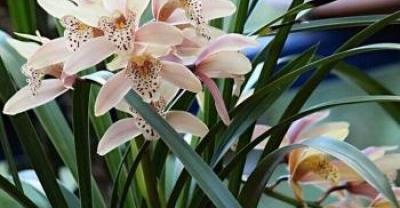
What is the prospect of planting wild vegetables in rural areas?
We know that wild vegetables have pure quality and are a wonderful gift from nature. They are pollution-free, nutritious, fresh and delicious, and are one of the best ingredients. So...
- Next
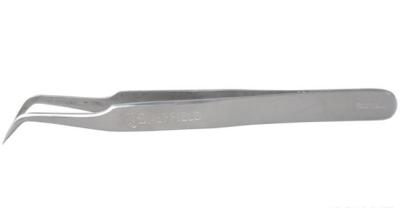
How to grow direct seeding rape in rice field?
Rice rape direct seeding is a relatively new farming technology put forward a few years ago, which not only reduces labor input, but also increases and stabilizes production and efficiency of rape.
Related
- Fuxing push coffee new agricultural production and marketing class: lack of small-scale processing plants
- Jujube rice field leisure farm deep ploughing Yilan for five years to create a space for organic food and play
- Nongyu Farm-A trial of organic papaya for brave women with advanced technology
- Four points for attention in the prevention and control of diseases and insect pests of edible fungi
- How to add nutrient solution to Edible Fungi
- Is there any good way to control edible fungus mites?
- Open Inoculation Technology of Edible Fungi
- Is there any clever way to use fertilizer for edible fungus in winter?
- What agents are used to kill the pathogens of edible fungi in the mushroom shed?
- Rapid drying of Edible Fungi

